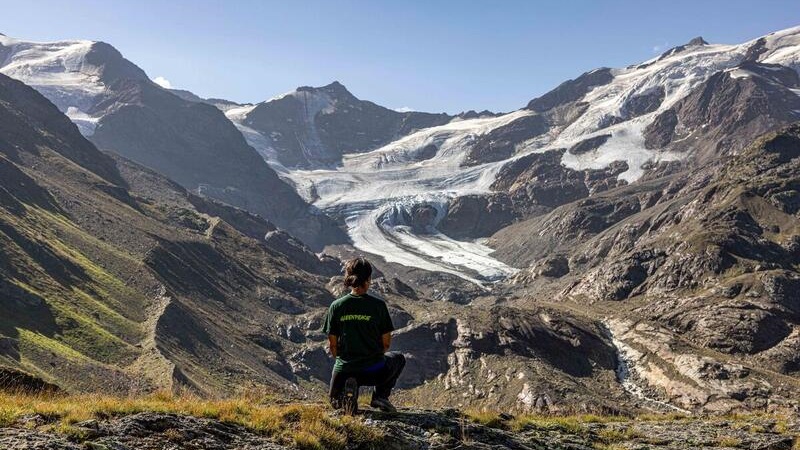Annual emissions may have just peaked but the world’s temperature will keep rising until we reach net zero
Ahead of every Cop climate talks, think tanks, campaign groups and United Nations agencies get their number-crunchers to produce a load of reports summarising where the fight against climate change is at.
These reports can start to induce deja-vu. We’re doing some stuff to tackle climate change, usually more than the year before. But not fast enough to avoid some pretty terrifying destruction.
“Broken record,” is the title of the UN’s latest emissions gap report. “Temperatures hit new highs yet world fails to cut emissions (again),” the subtitle.
The world is breaking records for emissions and temperatures, fuelling climate disasters across the globe.
Discover how to put the world back on course for its climate goals in UNEP’s latest #EmissionsGap report: https://t.co/xTlAHFOGp1 pic.twitter.com/rYHhx9BzuA
— UN Environment Programme (@UNEP) November 21, 2023
So far, so gloomy. But the record may be about to come unstuck as some analysts predict emissions will peak in 2023.
By Cop29, we could be reading reports saying that this time the world has finally succeeded in cutting emissions – and not because a pandemic brought the global economy to a halt.
From then onwards, we will be damaging our planet less and less each year until we reach net zero and stop damaging it at all.
What is still to play for is how fast we reach that point and how much damage will have been done.
We’re nearing peak emissions…
A report by Climate Analytics finds a 70% chance that emissions will peak in 2023 and start falling in 2024, mainly thanks to electric vehicles, solar and wind power.
The International Energy Agency says similar, suggesting that fossil fuel CO2 emissions – a huge chunk of the total – could peak before 2025 and as early as 2023.
The US government’s Energy Information Administration is more pessimistic, predicting that solar won’t boom that fast and energy-related CO2 emissions will either continue to increase or plateau.
While emissions from producing electricity are going to come down, these gains will be partly cancelled out by still-increasing emissions from transport.
…but greenhouse gas levels keep rising…
But that doesn’t mean there will be less greenhouse gas in the atmosphere each year. Even if you pour less and less water into a bath, the bath still gets fuller each time.
The World Meteorological Organization reports that carbon dioxide concentrations in the air were 50% higher than pre-industrial levels for the first time in 2022. Methane and nitrous oxide levels also rose.
Greenhouse gas levels in our atmosphere continue to rise.
Concentrations of CO2, which is responsible for most of the warming effect on our climate, were a full 50% above the pre-industrial era for the first time in 2022. #COP28 #StateofClimatehttps://t.co/tm0uuH4Gx0 pic.twitter.com/Gs2yhRQKUt— World Meteorological Organization (@WMO) November 15, 2023
…as does the earth’s temperature…
The world is now on average 1.25C hotter than it was in the latter half of the nineteenth century.
Last year, the United Nations Environment Programme (Unep) said governments’ climate plans would put us on course for 2.4-2.8C of warming.
Since then, very few countries have increased their ambition and emissions kept rising, so they now say we’re on course for 2.5-3C of warming.
That’s if governments plans are fully implemented. But the report says that most countries aren’t doing enough to meet their promises.
…and the damage done…
Rising emissions mean rising temperatures which means rising destruction caused by climate change. This devastation is hard to measure but there are a few metrics we can use.
A study in the Lancet medical journal found that climate change made 127 million extra people go hungry in 2021, compared to the 80s, 90s and noughties.
They found it increased the potential of mosquitos to transmit dengue fever transmission by about a quarter and put 1.4 billion people at risk of vibriosis as warmer water helps bacteria in the sea thrive.
The insurance company Swiss Re says people are losing more and more of their property because of storms, floods and wildfires.
With all these impacts rising, it’s more important than ever to adapt to climate change. But Unep’s adaptation gap report finds developing countries got less adaptation finance in 2021 than they did in 2020. They need an estimated $194-366 billion. They got $21 billion.
Unlock the path forward!
UNEP’s 2023 #AdaptationGap Report identifies 7 ways to increase financing and prevent future loss and damage from the devastating impacts of the #ClimateCrisis.
Explore here: https://t.co/pxZas4WpKE
— UN Environment Programme (@UNEP) November 9, 2023
…and investment in fossil fuel production
The world is still investing over $1 trillion a year in fossil fuels – almost double the level the IEA judges compatible with 1.5C of global warming.
Countries like the US, Brazil, Saudi Arabia, Russia and Qatar are boosting oil and gas production, while India slows down the global decline in coal mining.
Demand for fossil fuels is about to peak
While the supply of fossil fuels is increasing, the IEA says the demand for coal, oil and gas has either peaked or is about to peak.
Coal is about to start a rapid decline, the IEA predicts, while demand for oil and gas
Read More

